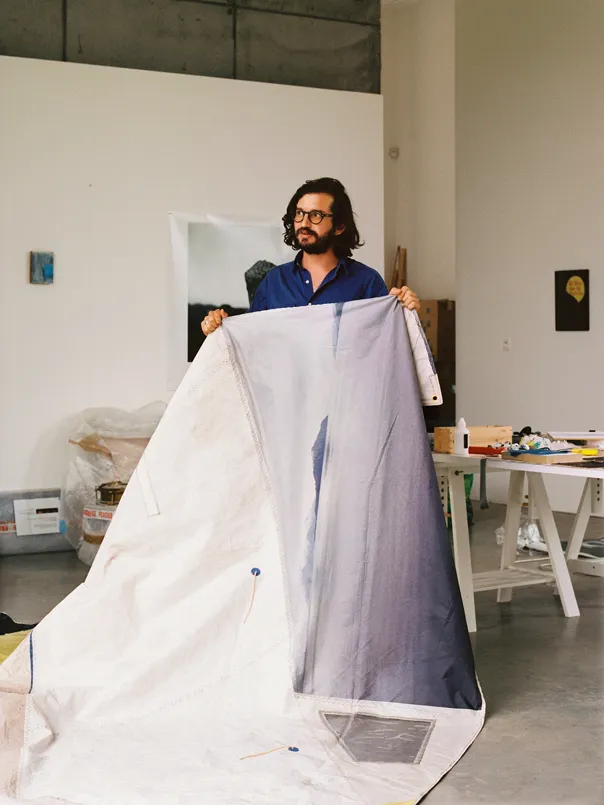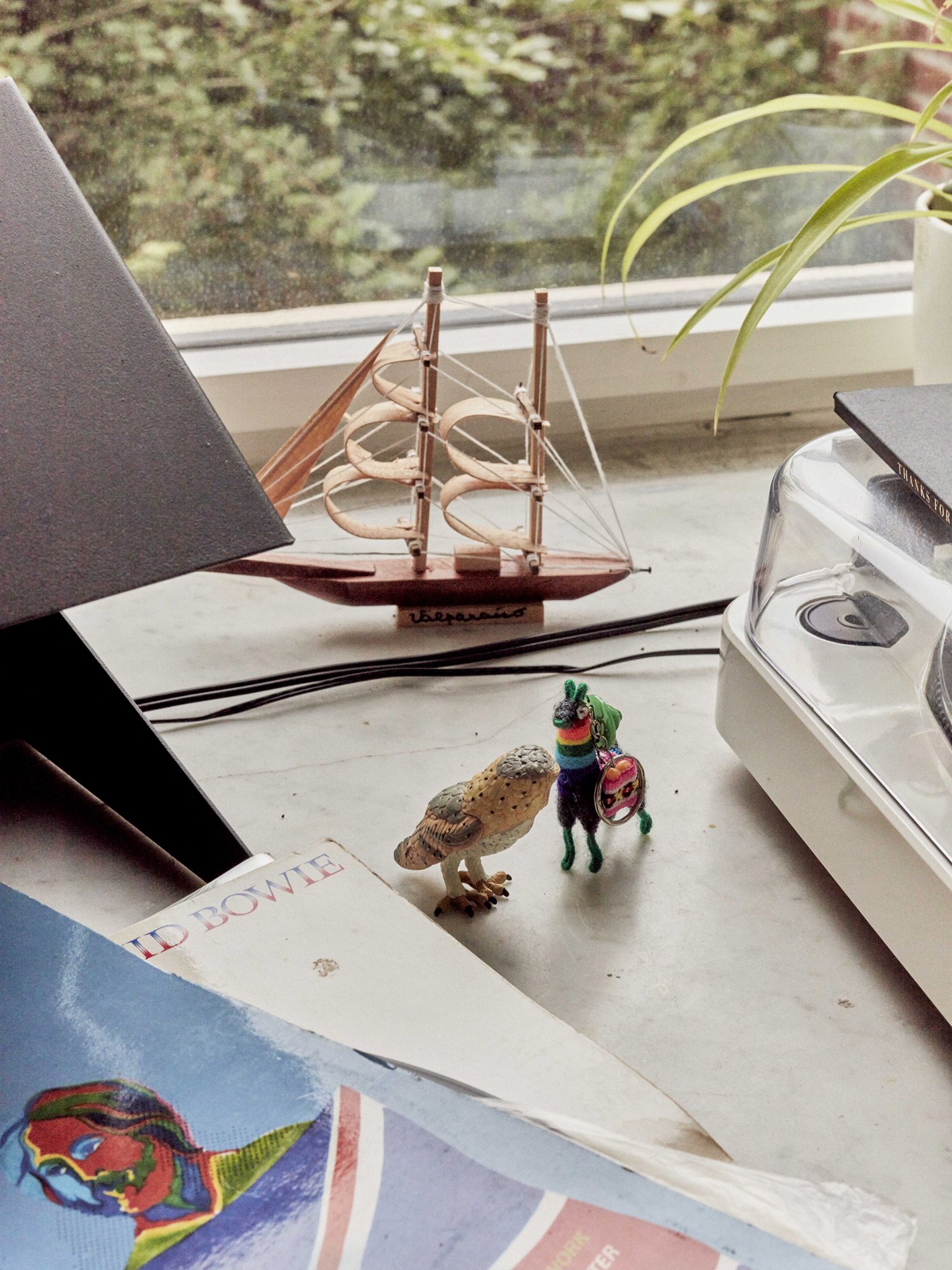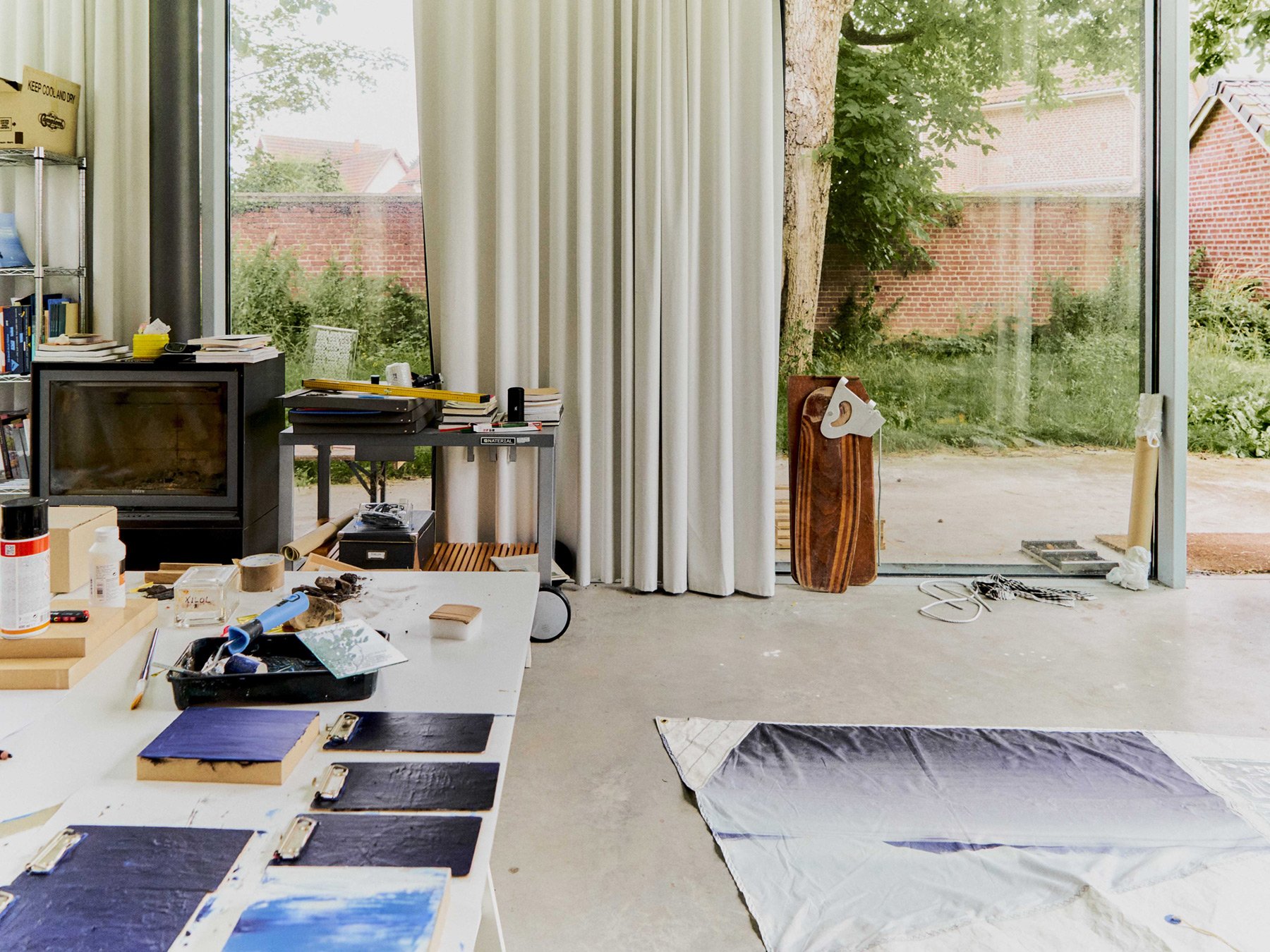
Interview d'Enrique Ramirez
“I came face to face with myself and I started doing all those things that I had never taken the time to do”. Enrique Ramirez
You studied at the Le Fresnoy National Contemporary Arts Studio in Tourcoing from 2007 to 2009. Have you been back to the north of France since then? What did you think about spending another year here?
The north of France was the first part of the country—and of Europe—that I encountered. I landed in Paris in 2006 and went straight to Roubaix from there. This is where I learned French, where I studied, where I have made lasting friendships, and where I exhibited my first artistic projects. This region has welcomed me fully and I consider it home. So, yes, I was overjoyed at the prospect of coming back in residence!

What brought you from Santiago to Roubaix?
It was purely by chance. I exhibited at the Biennale of Video and New Media of Santiago, where I won first prize, which was a three-month residency at Le Fresnoy in Tourcoing. That was why I came to Europe for the first time. I liked the school, the region, and the people so much that I then applied to Le Fresnoy so that I could stay on to study there, and I was admitted! So, that residency was what brought me to the north of France and let me discover Europe. And here I am, again in residence, again in the same region, almost fifteen years later.
“Lens is a very international city where a lot of border dwellers live; it’s a place that has welcomed immigrant workers such as myself”.
Unbeknownst to you, you have become very sentimentally attached to this country.
Ironically, it has been in the north of France that I have been most able to overcome the language barrier. I find the inhabitants accessible, welcoming, and warm. Maybe it’s because of the climate? They spend less time outside on their back patios; they’re more likely to meet indoors, to go to one another’s houses. This creates a sensation of closeness. Their economic and social problems and their family histories remind me of the environment in which I grew up. And Lens is a very international city where a lot of border dwellers live; it’s a place that has welcomed immigrant workers such as myself.
Do any of your works shed light on this connection between Chile and the north of France?
In fact, it was in Béthune that I found the inspiration for my film Un hombre que camina, which was shown at the Venice Biennale in 2017. I worked with Les Charitables, one of the oldest lay fraternities in France, which still today transports the deceased during funerals. I was struck by these cortèges of men dressed in their long black cloaks and bicorn hats. My search for similar processions in South America took me to a vast salt lake, the main setting for the film, in which we see a man walking who appears to be floating between earth and sky.
In 2020, before Lens, you were in residency at the National School for Photography in Arles. You had an exhibition there in the summer of 2021 as part of the Rencontres de la Photographie. One of the pieces in that show was the result of a poetry writing project led by students with a hundred residents of Arles. How do these different places affect your work? How do their inhabitants inspire you? Did Arles yield something singular, the way the north of France has?
Working with seven students at Arles who had come from the world over, we had initially envisioned a documentary series about the inhabitants, their stories, and their memories. This took the form of filmed interviews. We couldn’t finish this project because of the lockdown. So, we couldn’t meet these people, but we could write to them! We sent our questionnaires to some 150 people, 25 of whom responded. Many of them talked about their solitude, gardening, feeling rooted and uprooted. We wrote a film about an indoor plant, a ficus tree that was transported from one place to another by four residents of Arles. Taken out of its normal habitat, it symbolises migrations. The students also curated my exhibit during the Rencontres de la Photographie. They chose a series of photos I had made in 2009 in the Jungle in Calais which I had never shown. This series also deals with uprooting and migrations, and unfortunately it remains very current. So, even when I am in Arles, I feel as if I am from the north of France!
“I’m not really a “studio” artist, rather an artist of place and context”.
The Lens residency is situated in the heart of an old mining basin, the Artois, which is still economically, socially, and topographically marked by this heritage. How did this mining and industrial culture influence your production during your residency?
This culture is not unfamiliar to me, because Chile is a mining country that began exporting saltpetre in the early 20th century, followed by coal and then, of course, copper. Nevertheless, its specificities resonated with me instantly. I’m not really a “studio” artist, rather an artist of place and context. I consulted the archives at the Louvre-Lens, where I read some of the 4,000 letters sent by the inhabitants of Lens and the surrounding areas in 2002 in support of the museum’s construction. They all talked about decentralisation, their faith in the future, their impatiently wanting access to culture, the reputation of their region, and their “forgotten city,” among other things. I found this very moving, and I felt that I was living amidst a real community. Together with Marie Lavandier, the museum’s director, I am in the process of conceiving a project involving these letters, maybe a reading, for the 10th anniversary of the Louvre-Lens in 2022! We have also conceived a series of four sound pieces that will be performed over the course of an entire day, one for each season, so I will be back here again!
“I came face to face with myself and I started doing all those things that I had never taken the time to do”.
Did the singularity of the architecture affect you?
It’s really a movie set here, with the identical houses stretching out to infinity, all made out of brick. Sometimes I feel I am in Peter Weir’s 1998 film The Truman Show! Because of the lockdowns, I wasn’t able to look into the history of these neighbourhoods enough, which are now recognised and protected as part of the country’s industrial heritage.
In fact, wasn’t the residency a kind of house arrest?! Despite the two lockdowns in November 2020 And April 2021, did you stay only in Lens, or did you use Lens as a base for exploring other surrounding areas? If so, which ones?
When I moved here, I had just left my apartment. So, I arrived with all my things and I really moved in, as if this were my new home. I had in fact planned to travel and to use the house as a base. Nothing went as planned, though, first of all because within a week, I had met everyone – the neighbours, the shop owners – and I wanted to spend time with them. And then, because of the months we spent either in lockdown or under curfew, I was forced to live here alone in this very silent residence. At times it was even too solitary, almost a spiritual retreat! This experience reminds me of the month I spent crossing the Atlantic, from Chile to Dunkerque, on a container ship, with an infinite horizon as my only reference point – never mind the ship rolling this way and that! I came face to face with myself and I started doing all those things that I had never taken the time to do, especially ones that require a studio bathed in natural light: painting, making collages, repairing sails… In this way, the residency gave me the chance to change my practices and test new mediums and formats.
You were born in a country with 6,000 kilometres of coastline. Water permeates your works and constitutes the setting of your films. Lens is a city of earth located in the middle of a mining basin 80 kilometres away from the sea. Did you dream of setting sail again? Did you visit the Côte d’Opale and the Flanders Coast?
I do come from a country with a unique geography, a long, straight coast wedged in between the ocean and tall mountain ranges. Everything in Lens is flat and you can see very far into the distance. I find this very cinematographic. I no longer have – as I do in Chile – the mountains as a landmark to the east, and the sea as a marker to the west. So, I’m a bit lost, but I love that! Yes, I have missed the sea since coming here, but I cultivate that absence and savour it; that way, the pleasure of renting a car and “visiting” it remain intact. So, I am not close to the sea, but I have not lost my connection to water either. Here it falls out of the sky constantly! Jokes aside, I was already familiar with the coastline of the north of France and Belgium. When I came here in 2013 on the ship from Valparaiso, I landed in Dunkerque.

“If you spend too much time testing, if you like searching for things too much, it’s hard to finish anything”.
Among the artists that the Pinault Collection invited to the Lens residency, Bertille Bak (in 2007) and Hicham Berrada (in 2013), like you, studied at Le Fresnoy. Did you know them? Did you talk to them before or during the residency about this place, the studio, or the tools at your disposal?
I talked with Bertille Bak before arriving. She was the resident right before me and yes, I did know her from our student days at Le Fresnoy. I am in touch with Hicham, and our paths crossed again last year when we were both selected for the 2020 Prix Marcel Duchamp. But we haven’t taken the time to reflect on what it meant to be in residency, what its significance could be.
Various artists have left tools and equipment in the studio, like the ceramic kiln. What opportunities did the studio provide you with?
A priori, I am not a studio artist. This was the first time I had ever had a room to myself to work in, and I quickly got used to this pleasant, luminous space. I kept the woodstove running all winter! Because of these conditions and the lockdown, I adapted my working method very freely and allowed myself to experiment with my ideas. It was highly satisfying, but I also know that this risks becoming a distraction. If you spend too much time testing, if you like searching for things too much, it’s hard to finish anything.
What were these tests, these attempts that you engaged in during your residency in Lens?
I developed practices that I could only do alone and that didn’t require too much equipment. I made paintings, drawings, and collages, I worked on my writing, and above all, I made many sound recordings of the surrounding environment: a few conversations, the squeaking of the house, the sound of my solitude… It was based on this material that I conceived the performance for the 10th anniversary of the Louvre-Lens.
This residency and the lockdown gave me a new way of working: dabbling, testing, enjoying having doubts”.
What did you expect from this residency? What had you imagined? What did you accomplish?
I really wanted my father to come spend a year here with me and to set up a sail loft, perhaps by working with former textile workers. What I accomplished was engaging in a new way of working that the residency and the lockdowns allowed me to develop: dabbling, testing, enjoying having doubts.
The residency is a studio and a home. What was your experience of this dual territory?
I have always worked at home. I lost a lot of time during the first three months looking for my things. I gradually became more organised: I worked with my hands in the studio generally in the mornings, and I worked on the computer in the large room under the roof, generally in the afternoons. Surrounded by all my things and my books, I really felt at home. I cooked every day, I hosted friends…
Do you have any advice or recommendations for the next resident?
If they’re on foot, they should visit the Louvre-Lens often, because it’s just a stone’s throw away. They should climb the spoil tips, and they should have a Brazilian beer at the bar next door. If they have a car, they should visit the region’s museums, all the way to Belgium!
